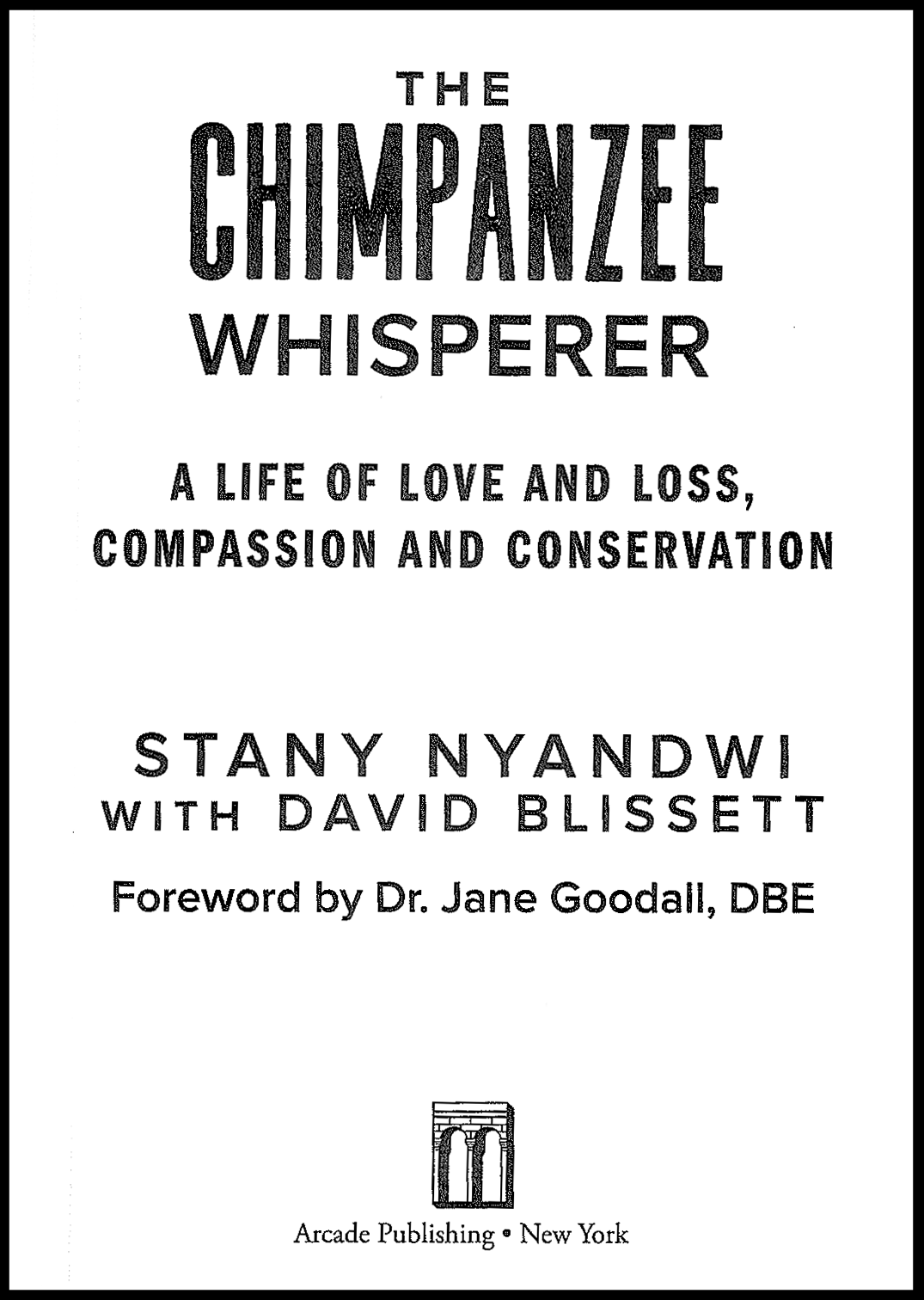|
<BOOK REVIEW>
Published online (March 13, 2023)
The Chimpanzee Whisperer: A Life of Love and Loss, Compassion and Conservation By Stany Nyandwi with David Blissett Arcade Publishing, New York, 200 pp. Published in 2022 ISBN: 1950994325, USA $ 27.99, hard cover
William C. McGrew
School of Psychology and Neuroscience, University of St Andrews, Scotland, UK 
Scores of books have been written or edited about Pan troglodytes, probably more than about any other species of non-human primate. Yet, so far as I know, all have been written by Europeans, Japanese, or North Americans. Until now, none has been written by an African, despite their sharing a continent with these apes. Now comes the mold-breaker, in the form of a notable memoir. Its significance is attested to in a laudatory foreword by Jane Goodall, and it follows an award-winning documentary film, Pant Hoot (panthootfilm.com). (Little is said about the assistance offered by David Blissett, although he is an award-winning author, as in The Primate Family, 2015. Presumably he acted as amanuensis.) So, what is the content of the book? African involvement with chimpanzees usually occurs in four arenas: In the wild, research or conservation: That is, as researcher, field assistant, guide, tracker, etc. at a field study site, or on-the-ground, facilitator with the public in efforts by international or local NGOs, seeking to establish or maintain protected areas for the apes. In captivity, zoological garden or sanctuary: That is, as manager, caregiver or keeper in a zoo or rescue center, in Africa or further afield. Nyandwi's life has been spent mostly as a caregiver of exceptional talent in zoos (e.g. Entebbe) or sanctuaries (e.g. Ngamba Island). He has visited field sites, especially Gombe, and worked with a Ugandan conservation initiative, but has not done research. The titular label, whisperer, does not appear in the Oxford English Dictionary, but Jane Goodall (p. xi) defines it as “able to communicate with them [chimpanzees] in a special way”. The term is not new, with obvious recycling from Nicholas Evans' The Horse Whisperer (1995), a best-selling novel, later made into a Hollywood film starring Robert Redford, Scarlett Johansson, etc. In all cases, it is inter-specific empathy that is the key, not actual whispering. The book takes standard memoir form, that is, chapter-by-chapter, chronological prose, often with ‘cliff-hanging’ chapter endings. It proceeds from his birth in Burundi, through crucial work experiences in Uganda, to his most recent significant position at Chimp Eden in South Africa. The content is clear and entertaining, and revealing and heart-felt. It is frankly self-questioning when necessary and unstinting in expressing gratitude. There are 27 good-quality color photographs. On the other hand, the book's form is sometimes frustrating. It has no index nor references. Less than a page of ‘More Information’ consists only of 14 links to captive institutions, in which the Jane Goodall Institute features most prominently. All of them reflect his personal experiences; there is no mention of other chimpanzee field sites (e.g. Mahale), other notable zoos (e.g. Arnhem) or other sanctuaries (e.g. Chimfunshi). Most unusual is a single page, ‘Authors' Notes’, which stresses the harm from “publishing material that depicts humans in close contact with nonhuman primates” (p. vii). Yet, the book's cover photo shows just that: Nyandwi embracing a young chimpanzee held in his arms, as do 10 of the 27 photographs. Nyandwi is generous to his patrons and colleagues, especially to Debby Cox, who assisted him repeatedly as his career advanced, and Jane Goodall, who has inspired and employed him. They have supported his work with rescued chimpanzees in Burundi, Kenya, Uganda, and South Africa. Several themes recur throughout the book: One has to do with the frequency of these intelligent primates escaping from confinement. It probably occurs at every institution that keeps chimpanzees in captivity, at one time of another. In such cases that have been reported, the apes return or are returned to their enclosures without harm to either chimpanzee or human. This holds for all the examples that Nyandwi relates, none of which involved even a tranquilising dart gun. As I write, Furuvik Zoo in Sweden has just shot dead four chimpanzees that escaped from their enclosure. One was a three-year-old. They sought to justify its actions by referring to the great potential danger to humans, although the zoo was closed to the winter, so that no members of the public were present. The zoo's actions have prompted worldwide condemnation and a police investigation. Nyandwi's book shows better ways of dealing with the problem. Another theme that recurs frequently and more often as the book unfolds is Nyandwi's Christian devoutness. From the outset, God is frequently invoked as interceding in events to make them turn out right. Some of the outcomes are cited as miracles. Of course, the author's religious faith is his own business, but this aspect may make for uneasy reading for scientists. The book's subtitle refers to four aspects of his life. His losses were great, as his family was caught up in the Tutsi-Hutu genocide and died horrifically. His love of chimpanzees is exceeded only by his love of family, including his adopted children. Compassion is the bedrock of his success with captive chimpanzees, often expressed in challenging circumstances. His final chapter, ‘Riding the Same Truck’, convincingly urges the reader to join in the preservation of chimpanzees. All in all, a worthy book. Received: 10 January 2023 Accepted: 11 January 2023 Back to Online First |